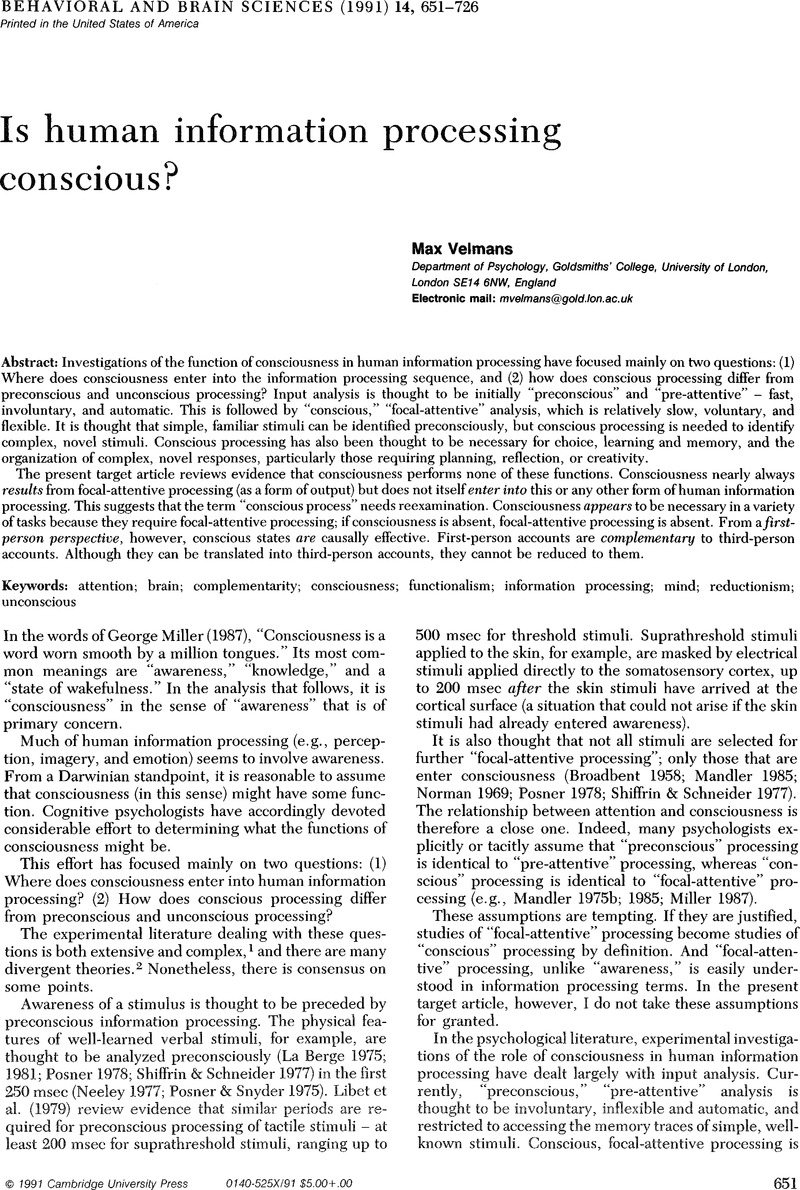Crossref Citations
This article has been cited by the following publications. This list is generated based on data provided by Crossref.
Glicksohn, Joseph
1993.
Putting consciousness in a box: Once more around the track.
Behavioral and Brain Sciences,
Vol. 16,
Issue. 2,
p.
404.
Navon, David
1993.
Experience and information should be distinguished.
Behavioral and Brain Sciences,
Vol. 16,
Issue. 2,
p.
405.
Habibi, Ali
and
Bendele, Michael S.
1993.
On relativity of time and the causal status of consciousness.
Behavioral and Brain Sciences,
Vol. 16,
Issue. 2,
p.
404.
Neill, W. Trammell
1993.
Consciousness, not focal attention, is causally effective in human information processing.
Behavioral and Brain Sciences,
Vol. 16,
Issue. 2,
p.
406.
Velmans, Max
1993.
Consciousness, causality and complementarity.
Behavioral and Brain Sciences,
Vol. 16,
Issue. 2,
p.
409.
Rao, K. Ramakrishna
1993.
Consciousness, awareness and first-person perspective.
Behavioral and Brain Sciences,
Vol. 16,
Issue. 2,
p.
407.
Rakover, Sam S.
1996.
The place of consciousness in the information processing approach: The mental-pool thought experiment.
Behavioral and Brain Sciences,
Vol. 19,
Issue. 03,
p.
537.
Velmans, Max
1996.
Consciousness and the “causal paradox”.
Behavioral and Brain Sciences,
Vol. 19,
Issue. 03,
p.
538.
STARZYK, JANUSZ A.
and
PRASAD, DILIP K.
2011.
A COMPUTATIONAL MODEL OF MACHINE CONSCIOUSNESS.
International Journal of Machine Consciousness,
Vol. 03,
Issue. 02,
p.
255.
Tsuchiya, Naotsugu
and
Saigo, Hayato
2021.
A relational approach to consciousness: categories of level and contents of consciousness.
Neuroscience of Consciousness,
Vol. 2021,
Issue. 2,





